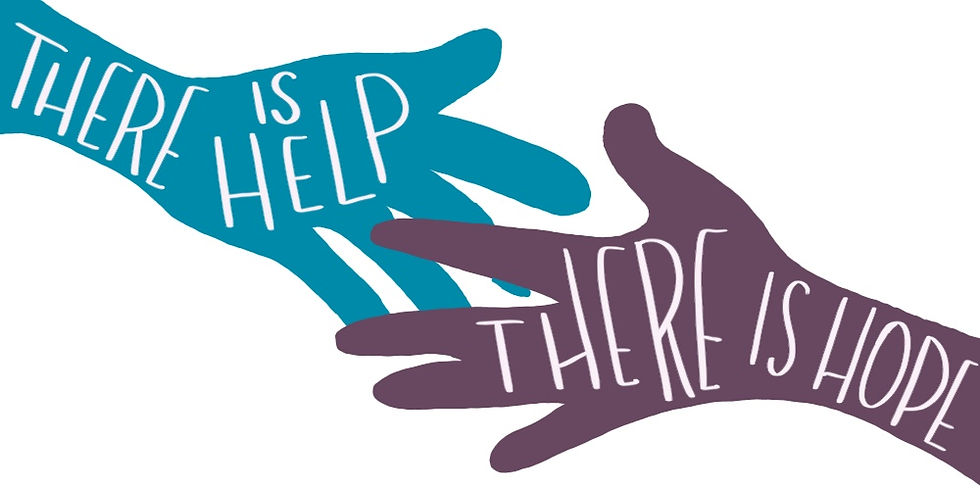Seasonal Affective Disorder (SAD)-What you need to know?
- PsycheEssentials

- Dec 7, 2021
- 3 min read

Major depressive disorder with seasonal pattern. Seasonal affective disorder (SAD) is a type of depression that begins and ends at about the same time every year. Symptoms of SAD start in the fall and continue into the winter months, sapping your energy and making you feel moody.
In most cases , the episodes begin in fall or winter and remit in spring. It is Less often that SAD causes depression in the spring or early summer.
Seasonal major depressive episodes as mentioned above substantially outnumber the nonseasonal major depressive episodes that may have occurred over the individuals lifetime.
Symptoms
Symptoms of SAD may start out mild and become more severe as the season progresses.
In most cases, seasonal affective disorder symptoms appear during late fall or early winter and go away during the sunnier days of spring and summer.
Signs and symptoms may include;
Feeling depressed most of the day, nearly every day
Losing interest in activities you once enjoyed.
Having low energy
Changes in your appetite or weight
Difficulty concentrating
Feeling hopeless, worthless or guilty
Having negative thoughts
Hypersomnia(Excess sleeping)/ Insomnia(Trouble sleeping)
Agitation or anxiety.
Mood Swings.
Social withdrawal (feeling like “hibernating”)
What Causes SAD?
Research indicates that people with SAD may have reduced activity of the brain chemical (neurotransmitter) serotonin, which helps regulate mood. Research also suggests that sunlight controls the levels of molecules that help maintain normal serotonin levels, but in people with SAD, this regulation does not function properly, resulting in decreased serotonin levels in the winter. Both serotonin and melatonin help maintain the body’s daily rhythm that is tied to the seasonal night-day cycle. (Source: NIMH)
If you think you may be suffering from SAD, talk to your health care provider or a mental health specialist about your concerns.
Treatment may include;
1. Light Therapy: light therapy has been a mainstay for the treatment of SAD since 1980s. It aims to expose people with SAD to a bright light every day to make up for the diminished natural sunshine in the darker months. For this treatment, the person sits in front of a very bright light box (10,000 lux) every day for about 30 to 45 minutes, usually first thing in the morning, from fall to spring.
However, people with certain eye diseases or people taking certain medications that increase sensitivity to sunlight may need to use alternative treatments or use light therapy under medical supervision.
2. Psychotherapy or “Talk Therapy”: Cognitive behavioral therapy (CBT) is a type of talk therapy aimed at helping people learn how to cope with difficult situations; CBT also has been adapted for people with SAD. CBT with light therapy were equally effective in improving SAD symptoms. Some symptoms seemed to get better a little faster with light therapy than with CBT.
3.Medications: Because SAD, like other types of depression, is associated with disturbances in serotonin activity, antidepressant medications called selective serotonin reuptake inhibitors (SSRIs) are also used to treat SAD when symptoms occur. All medications can have side effects. Talk to your doctor about the possible risk of using these medications for your condition.
4. Vitamin D: Many people with SAD often have vitamin D deficiency, nutritional supplements of vitamin D may help improve their symptoms. However, studies testing whether vitamin D is effective in SAD treatment have produced mixed findings, with some results indicating that it is as effective as light therapy but others detecting no effect.
Prevention of SAD: Since the timing of the onset of winter pattern-SAD is so predictable, people with a history of SAD might benefit from starting the treatments mentioned above before the fall to help prevent or reduce the depression.
The prevalence of winter-type seasonal pattern appears to vary with latitude, age and sex. Prevalence increase with higher latitudes. Age is also a strong predictor of seasonality, with younger persons at higher risk for winter depressive episodes.
Severity is based on the number of symptoms, degree and functionality from mild, moderate and severe.
Note: Do not include cases in which there is an obvious effect of seasonally related psychosocial stressors (e.g. regularly being unemployed every year.)




Comments